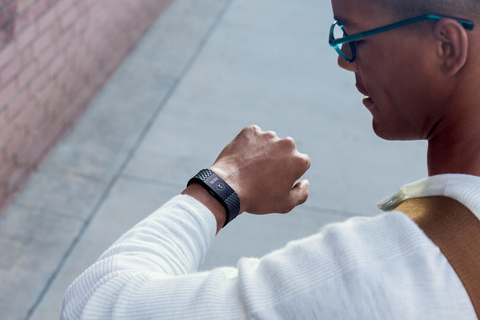Gathering Real-Time Flu Data
"Responding more quickly to influenza outbreaks can prevent further spread and infection, and we were curious to see if sensor data could improve real-time surveillance."
"We demonstrate the potential for metrics from wearable devices to enhance flu surveillance and consequently improve public health responses."
"In the future as these devices improve, and with access to 24/7 real-time data, it may be possible to identify rates of influenza on a daily instead of weekly basis."
Jennifer Radin, U.S. Scripps Research Translational Institute, California
"[More work is needed] to gauge how reliable these data are over time, how specific these measurements are for flu, and how representative Fitbit users are of the whole population."
Rosalind Eggo, public health expert, London School of Hygiene Tropical Medicine
mobihealthnews
''Currently, CDC [influenza-like illness (ILI)] data are typically reported [one to three] weeks late and reported numbers are often revised months later."
"The ability to harness wearable device data at a large scale might help to improve objective, real-time estimates of ILI rates at a more local level, giving public health responders the ability to act quickly and precisely on suspected outbreaks."
"To our knowledge, this is the first study to evaluate and show that objective data collected from wearables significantly improved nowcasting of influenza-like illness."
"This study shows that using RHR and other metrics from wearables has the potential to improve realtime ILI surveillance. New wearables that include continuous sensors for temperature, blood pressure, pulse oximetry, ECG, or even cough recognition are likely to further improve our ability to identify population and even individual-level influenza activity."
"In the future, with access to real-time data from these devices, it might be possible to identify ILI rates on a daily, instead of weekly, basis, providing even more timely surveillance. As these devices become more ubiquitous, this sensor-based surveillance technique could even be applied at a more global level where surveillance sites and laboratories are not always available."
Study researchers
An American study, published in The Lancet Digital Health journal, showed that statewide predictions of flu outbreaks, with the use of Fitbit data, were improved and accelerated. The study found that heart rate and sleep data extracted from wearable fitness tracker watches can help predict and alert public health officials to outbreaks of flu more accurately in real-time than methods of surveillance currently in use.

Using data from over 47,000 Fitbit users in five U.S. states enabled the researchers to establish the usefulness to health authorities of more reliable, quicker data than the usual surveillance reporting method which can take up to three weeks to process. Response measures as in the deployment of vaccines or anti-virals can often lag, as a result. The World Health Organization estimates that up to 650,000 people die of respiratory diseases annually world wide, linked to annual seasonal flu.
Crowdsourcing data like Google Flu Trends and Twitter upon which previous studies were based, experienced variable levels of success -- in part -- according to experts in the field, because it is not possible to separate behaviour of those with flu from people who merely embark on an online search for information, given more broad media and public attention to the issue during outbreaks.
The research team, co-led by Jennifer Radin, de-identified data from 200,000 people whose Fitbits tracked their activity, heart rate and sleep for a minimum of 60 days during March 2016 to March 2018, the study period. Of the 200,000 subjects, 47,248 Fitbit wearers from California, Texas, New York, Illinois and Pennsylvania whose average age was 43 and 60 percent female, wore the devices consistently throughout the study period.
Resting heart rate and sleep duration were monitored and flagged as abnormal if the average weekly heart rate was significantly above their overall average and weekly average sleep was not below their overall average. The resulting data was then compared to the U.S. Centers for Disease control's weekly estimates for flu-like illness.
 |
| Using de-identified data from more than 47,000 Fitbit users across five states, researchers were able to evaluate over 13.3 million daily measurements and track deviations from each individual's personal norm. (Fitbit) |
Labels: Health, Influenza, Research, Tracking Data


0 Comments:
Post a Comment
<< Home